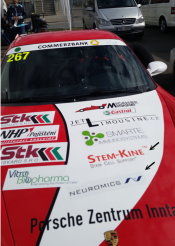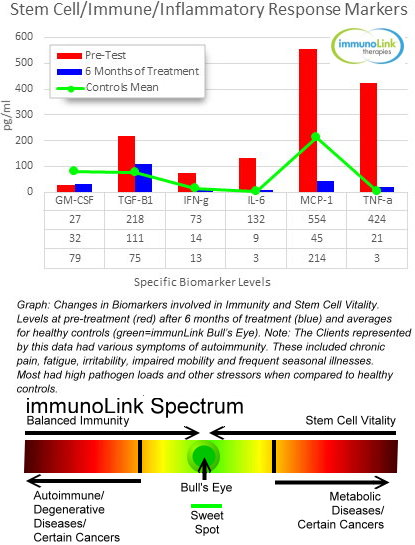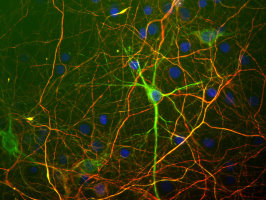Titania Nanotubes and Neural Prostheses
I am always on the hunt for the use of our Neural Progenitor Markers in cool and important human health applications. Here our Nestin Antibody is use to access the growth and maintenance of C17.2 neural stem cell line cultured in these nanotubes: Jonathan A. Sorkin, Stephen Hughes, Paulo Soares, Ketul C. Popat. Titania nanotube arrays as interfaces for neural prostheses. Materials Science and Engineering: C Volume 49, 1 April 2015, Pages 735–745. doi:10.1016/j.msec.2015.01.077
Image: Nestin staining eSC Derived hNP1 Human Neural Progenitors. Cells were stained using goat anti-mouse Alexa Fluor 488 secondary antibody (green) (Molecular Probe, A-11001) and counterstained with DAPI (blue).
Abstract: Neural prostheses have become ever more acceptable treatments for many different types of neurological damage and disease. Here we investigate the use of two different morphologies of titania nanotube arrays as interfaces to advance the longevity and effectiveness of these prostheses. The nanotube arrays were characterized for their nanotopography, crystallinity, conductivity, wettability, surface mechanical properties and adsorption of key proteins: fibrinogen, albumin and laminin. The loosely packed nanotube arrays fabricated using a diethylene glycol based electrolyte, contained a higher presence of the anatase crystal phase and were subsequently more conductive. These arrays yielded surfaces with higher wettability and lower modulus than the densely packed nanotube arrays fabricated using water based electrolyte. Further the adhesion, proliferation and differentiation of the C17.2 neural stem cell line was investigated on the nanotube arrays. The proliferation ratio of the cells as well as the level of neuronal differentiation was seen to increase on the loosely packed arrays. The results indicate that loosely packed nanotube arrays similar to the ones produced here with a DEG based electrolyte, may provide a favorable template for growth and maintenance of C17.2 neural stem cell line.
I will continue to how our stem cell solutions are used in cool, new discoveries.
Scientists grow retina cells from skin-derived stem cells
-
WASHINGTON - University of Wisconsin-Madison researchers have successfully
grown multiple types of retina cells from two types of stem cells, giving
new ho...
14 years ago


.jpg)









